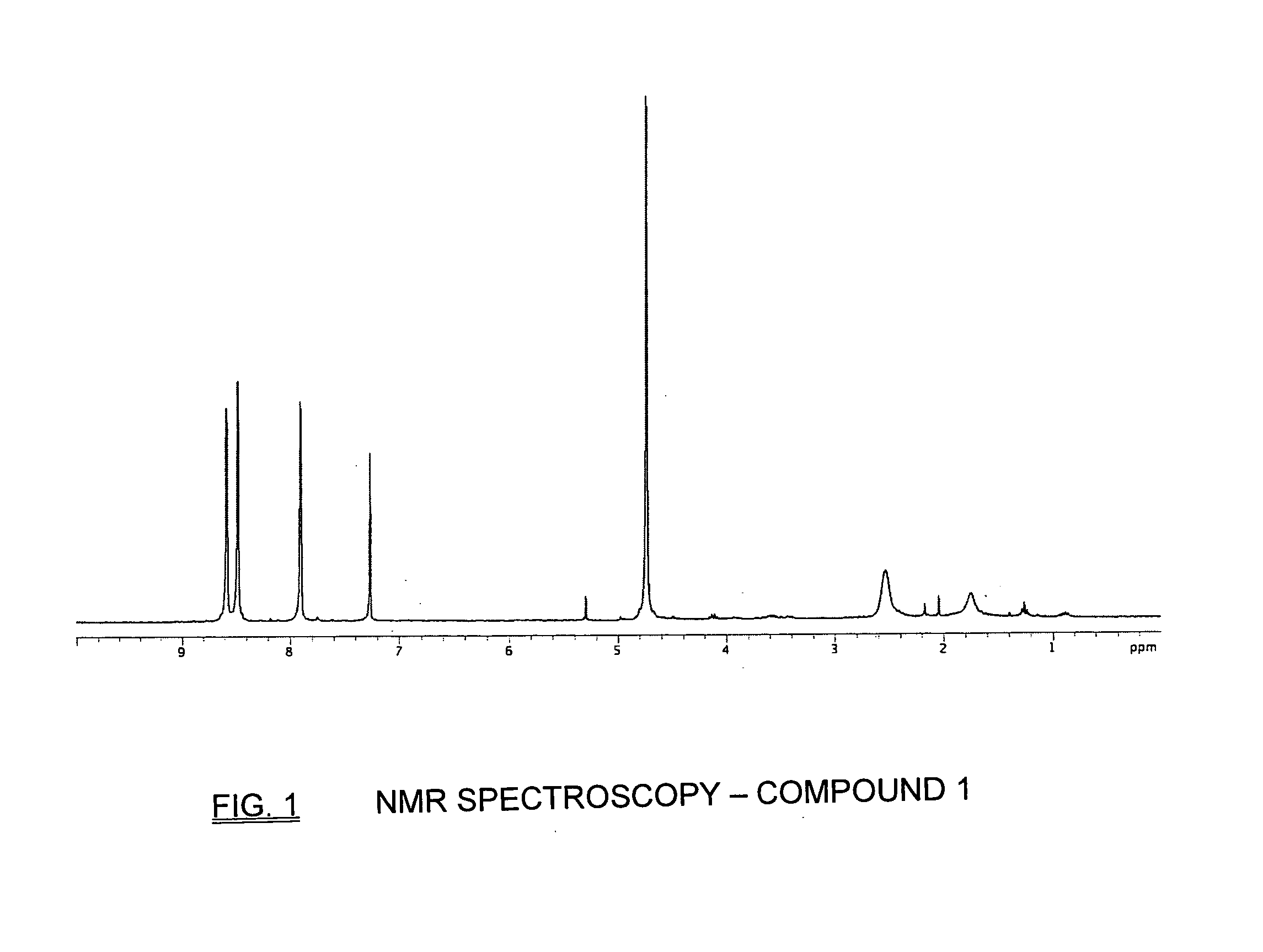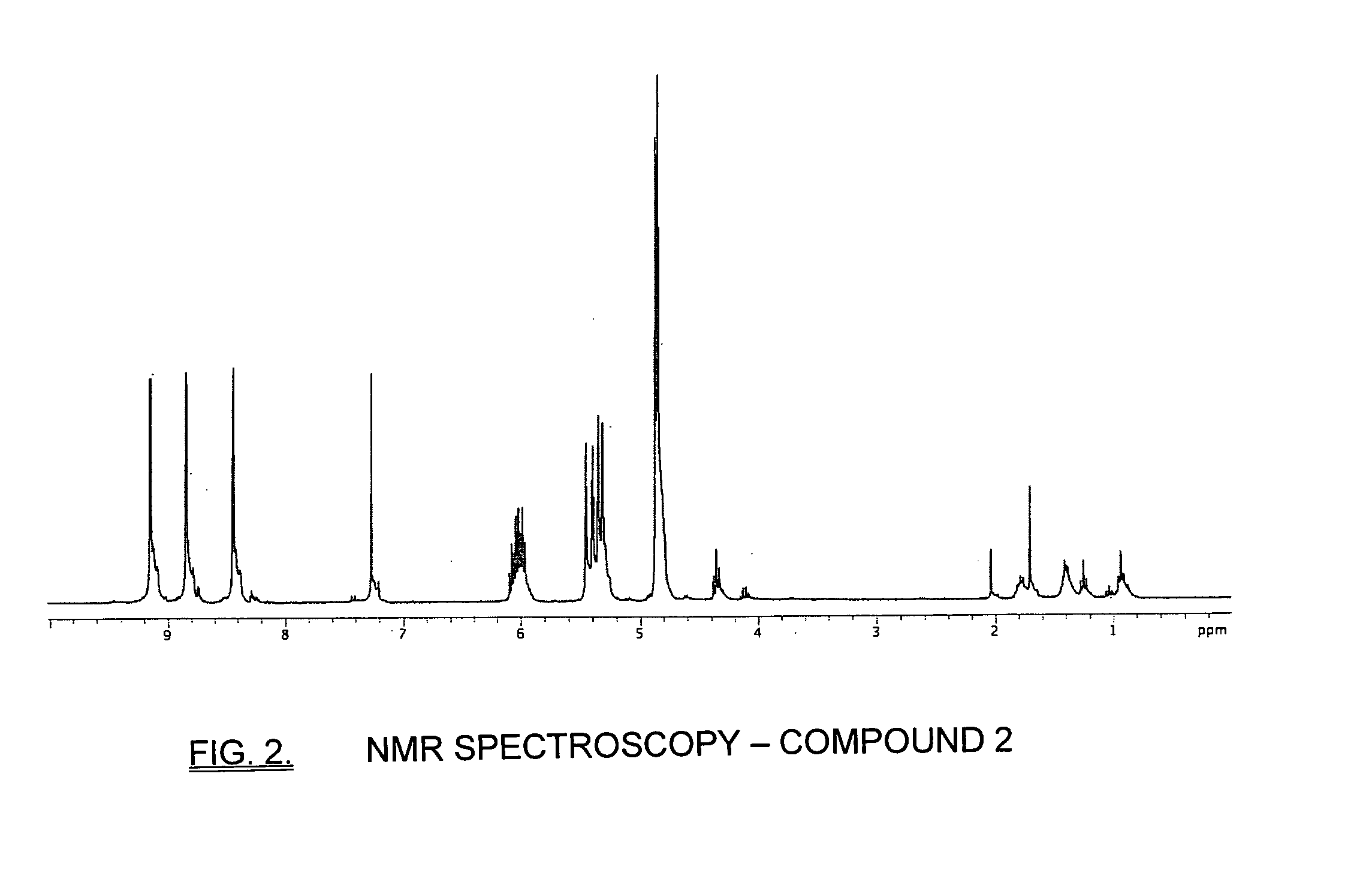Optical device and method for non-invasive real-time testing of blood sugar levels
a real-time testing and optical device technology, applied in the field of optical devices and methods for non-invasive real-time testing of blood sugar levels, can solve the problems of limited shelf life of strips, limited usability, and increased public health problems, and achieve the effects of improving patient safety, increasing the cost of strips, and increasing the number of patients
- Summary
- Abstract
- Description
- Claims
- Application Information
AI Technical Summary
Problems solved by technology
Method used
Image
Examples
example 2
Side Chain Liquid Crystals (Comb Polymer Liquid Crystals)
example 3
Discotic Liquid Crystals
Example 4
Contact Lens Production
[0055]In one method of production, a thin layer of typical contact lens material is spin-coated or otherwise injected or disposed into a mold and partially cured using thermal or radiation curing. Glucose-sensing optical coatings are then formed, imprinted, marked, or otherwise disposed on the partially cured layer in a pattern using screen or ink-jet printing. A second layer of contact lens material is then injected into the mold over the glucose-sensing pattern. Final curing forms the contact lens with the glucose-sensing optical pattern layered within the lens.
[0056]Examples 5 and 6 reflect synthesis of biocompatible hydrogel monomers useful in the practice of the invention.
example 5
[0057]
[0058]The components utilized in the synthesis of the cyclic siloxane are numbered as above. Methods of production for the components are described below. Each “compound” corresponds to the number in the above synthesis sequence.
[0059]Compound 1 was synthesized following the reported procedures as exemplified by the following references: Bachman, G. B.; Micucci, D. D. J. Am. Chem. Soc., 1948, 70, 2381-2384 and Zhang, N.; Tomizawa, M.; Casida, J. E. J. Med. Chem. 2002, 45, 2832-2840.
[0060]Compound 2
[0061]To a THF solution of NaH and compound 1 (1 g), a solution of allyl bromide in THF (10 ml) was added slowly. Then the mixture was heated to reflux for 20 hours. The reaction was quenched with 15 ml of water. The organic layer was separated, and the aqueous layer was extracted with THF (20 ml×2). The organic layer was combined and concentrated. Pure product was obtained as a colorless oil after column chromatography. (40% EA / Hexanes)
[0062]Compound 3
[0063]To a 500 m...
PUM
 Login to View More
Login to View More Abstract
Description
Claims
Application Information
 Login to View More
Login to View More - R&D
- Intellectual Property
- Life Sciences
- Materials
- Tech Scout
- Unparalleled Data Quality
- Higher Quality Content
- 60% Fewer Hallucinations
Browse by: Latest US Patents, China's latest patents, Technical Efficacy Thesaurus, Application Domain, Technology Topic, Popular Technical Reports.
© 2025 PatSnap. All rights reserved.Legal|Privacy policy|Modern Slavery Act Transparency Statement|Sitemap|About US| Contact US: help@patsnap.com



